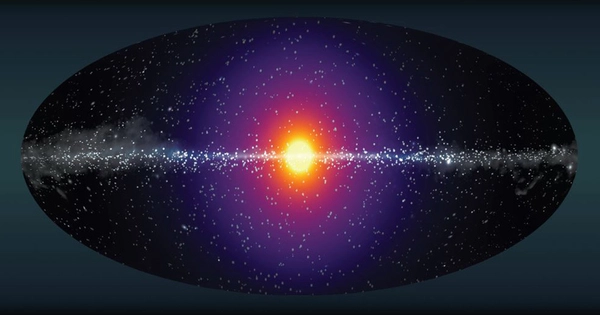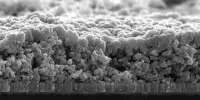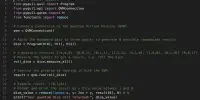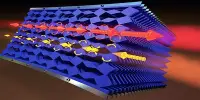Wolfgang “Wolfi” Mittig and Yassid Ayyad went looking for the universe’s missing mass, better known as dark matter, in the heart of an atom about three years ago. Their expedition did not lead them to dark matter, but they did discover something never seen before, something that defied explanation. At the very least, everyone could agree on an explanation.
“It’s been like a detective story,” said Mittig, a Hannah Distinguished Professor in Michigan State University’s Department of Physics and Astronomy and a faculty member at the Facility for Rare Isotope Beams, or FRIB. “We started looking for dark matter and didn’t find it,” he explained. “Instead, we discovered other things that theory has found difficult to explain.”
So the team went back to work, conducting more experiments and gathering more evidence to support their discovery. Mittig, Ayyad, and their colleagues bolstered their case at Michigan State University’s National Superconducting Cyclotron Laboratory, or NSCL.
Working at NSCL, the team discovered a new route to their unexpected destination, which they described in the journal Physical Review Letters. They also revealed intriguing physics at work in the ultra-small quantum realm of subatomic particles. The team confirmed, in particular, that even when an atom’s core, or nucleus, is overcrowded with neutrons, it can still find a way to a more stable configuration by spitting out a proton instead.
Dark matter is one of the most well-known phenomena in the universe about which we know the least. Scientists have known for decades that the universe contains more mass than we can see based on the trajectories of stars and galaxies.
Shot in the dark
Dark matter is one of the most well-known phenomena in the universe about which we know the least. Scientists have known for decades that the universe contains more mass than we can see based on the trajectories of stars and galaxies.
There had to be unseen mass, and a lot of it, for gravity to keep celestial objects tethered to their paths — six times the amount of regular matter that we can observe, measure, and characterize. Although scientists are convinced that dark matter exists, they have yet to discover where it is and devise a method for directly detecting it.
“Finding dark matter is one of the major goals of physics,” said Ayyad, a nuclear physics researcher at the Galician Institute of High Energy Physics, or IGFAE, of the University of Santiago de Compostela in Spain.
According to Mittig, scientists have launched approximately 100 experiments to try to uncover the nature of dark matter. “After 20, 30, 40 years of research, none of them have succeeded,” he said. “But there was a theory, a very hypothetical idea, that you could observe dark matter with a very specific type of nucleus,” said Ayyad, who previously worked at NSCL as a detector systems physicist.
This theory is based on a phenomenon known as dark decay. It was proposed that certain unstable nuclei, or nuclei that naturally fall apart, could emit dark matter as they disintegrated. So, knowing the odds were stacked against them, Ayyad, Mittig, and their team devised an experiment to search for a dark decay. But the gamble wasn’t as big as it sounds because probing exotic decays also lets researchers better understand the rules and structures of the nuclear and quantum worlds.
The researchers had a good chance of discovering something new. The question was what that would be.
Help from a halo
When people imagine a nucleus, many may think of a lumpy ball made up of protons and neutrons, Ayyad said. But nuclei can take on strange shapes, including what are known as halo nuclei.
A halo nuclei is an example of a halo nuclei. It is a type of beryllium isotope with four protons and seven neutrons in its nucleus. It keeps ten of the eleven nuclear particles in a small central cluster. However, one neutron floats far from the core, loosely bound to the rest of the nucleus, similar to the moon ringing the Earth, according to Ayyad.
Beryllium-11 is also a volatile element. After approximately 13.8 seconds, it disintegrates due to beta decay. One of its neutrons ejects an electron, transforming into a proton. This converts the nucleus into boron-11, a stable form of the element boron with five protons and six neutrons.
But according to that very hypothetical theory, if the neutron that decays is the one in the halo, beryllium-11 could go an entirely different route: It could undergo a dark decay.
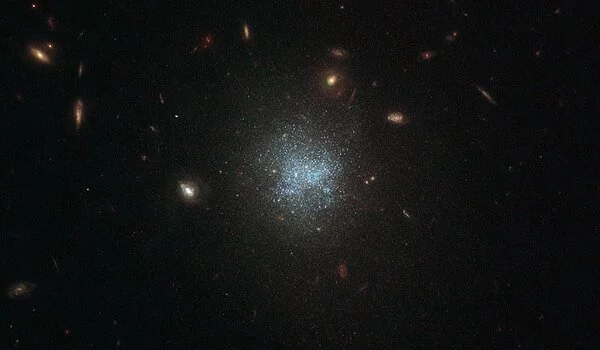
In 2019, the researchers launched an experiment at TRIUMF, Canada’s national particle accelerator facility, in search of that speculative decay. They did discover a decay with an unusually high probability, but it was not a dark decay. The loosely bound neutron in beryllium-11 appeared to be ejecting an electron like in normal beta decay, but the beryllium was not following the known decay path to boron.
The team hypothesized that the decay’s high probability could be explained if a state in boron-11 served as a portal to another decay, to beryllium-10 and a proton. For those keeping track, this meant that the nucleus had reverted to beryllium. Only now did it have six neutrons rather than seven.
“This happens just because of the halo nucleus,” Ayyad said. “It’s a very exotic type of radioactivity. It was actually the first direct evidence of proton radioactivity from a neutron-rich nucleus.”
But science thrives on scrutiny and skepticism, and the team’s 2019 report received plenty of both. Most theoretical models did not seem to agree with the “doorway” state of boron-11. Without a solid theory to explain what the team saw, different experts interpreted the team’s data differently and proposed alternative conclusions.
“We had a lot of long conversations,” Mittig explained. “It was for the best.”
As useful as the discussions were – and continue to be – Mittig and Ayyad knew they’d need more evidence to back up their findings and hypothesis. They’d have to come up with new experiments.
An open case on open quantum systems
Part of the excitement is because the team’s work could provide a new case study for what are known as open quantum systems. It’s an intimidating name, but the concept can be thought of like the old adage, “nothing exists in a vacuum.”
Quantum physics has provided a framework for comprehending nature’s incredibly small components: atoms, molecules, and much, much more. This knowledge has advanced almost every branch of physical science, including energy, chemistry, and materials science.
However, much of that framework was created with simplified scenarios in mind. The super small system of interest would be isolated in some way from the world’s ocean of input. Open quantum systems research takes physicists away from idealized scenarios and into the complexities of reality.
Open quantum systems are literally everywhere, but finding one that’s tractable enough to learn something from is challenging, especially in matters of the nucleus. Mittig and Ayyad saw potential in their loosely bound nuclei and they knew that NSCL, and now FRIB could help develop it.
NSCL, a National Science Foundation user facility that served the scientific community for decades, hosted the work of Mittig and Ayyad, which is the first published demonstration of the stand-alone reaccelerator technology. FRIB, a U.S. Department of Energy Office of Science user facility that officially launched on May 2, 2022 is where the work can continue in the future.
“Open quantum systems are a general phenomenon,” Ayyad said, “but they’re a novel idea in nuclear physics. And the majority of the theorists doing the work are at FRIB.” However, this detective story is still in its early stages. To complete the case, researchers need more data and evidence to fully understand what they’re seeing. That means Ayyad and Mittig will continue to do what they do best: investigate.
“We’re going ahead and trying new things,” Mittig said. “The overarching theme is that good experiments with strong analysis are essential.”
